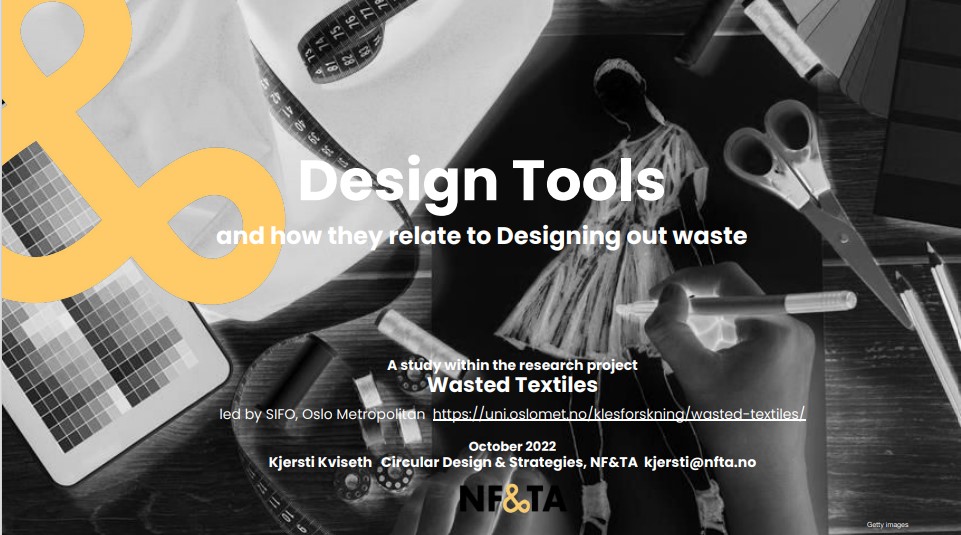Mapping of the industry’s design tools

Lisbeth Løvbak Berg, Tone Skårdal Tobiasson, Ingun Grimstad Klepp
One of NF&TA’s tasks in Wasted Textiles is to map what tools are being used by businesses, academia and organisations in the design and product development processes to ensure more environmentally friendly and circular production, and how these relate to the central questions in the project.
The mapping was done by Kjersti Kviseth. Ten different design tools were examined and the analysis shows that they have clear common trais. They all emphasise duarablity (‘Social’, ‘Emotional’, ‘Technical’, ‘Longer use’) and minimising waste in production.
The most important questions for Wasted Textiles is whether they will contribute to reducing the volumes of clothing produced and the share of these that are made from synthetic fibres. On these topics the tools are simultaneously very different and very vague. Only two of them include minimising the use of synthetic materials. Overall, the tools will therefore not halt the e ‘plastification’.
The same can be said for volumes. Admittedly, four tools say something about volumes, but the measured proposed are weak. The remaining six do not address this decisive aspect at all.
Kjersti Kviseth ends the report with a personal reflection where she emphasises that the tools reflect the understanding of the environmental issues that existed at the time of their making, and that they will be amended as the understanding matures and the knowledge about plastics and volumes increases. We can hope that she is right, but at the same time the road ahead is long and the current situation is that non of the most common design tools address the most central problematic of the industry: the increase in production volumes and the galloping plastification of clothing and other textiles.
Read the document here (docdroid.net).